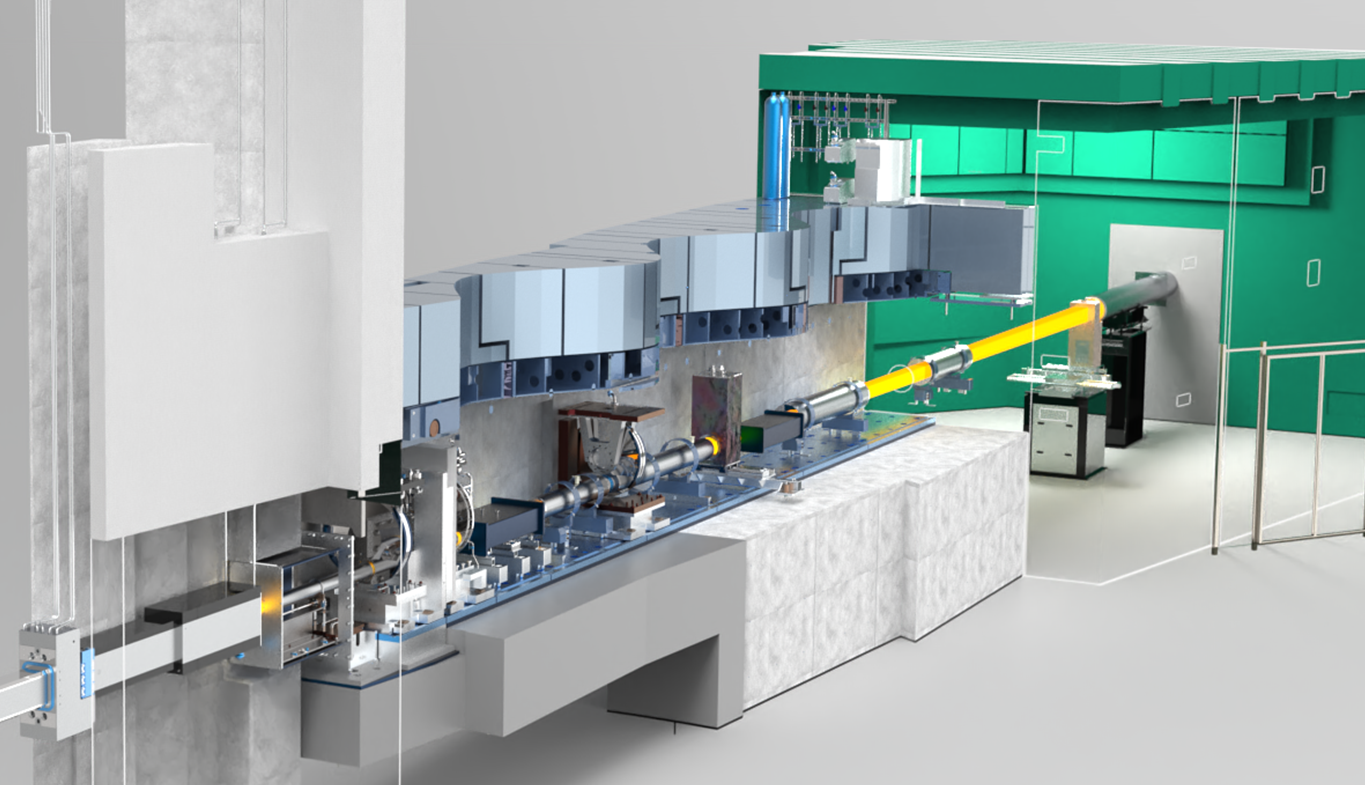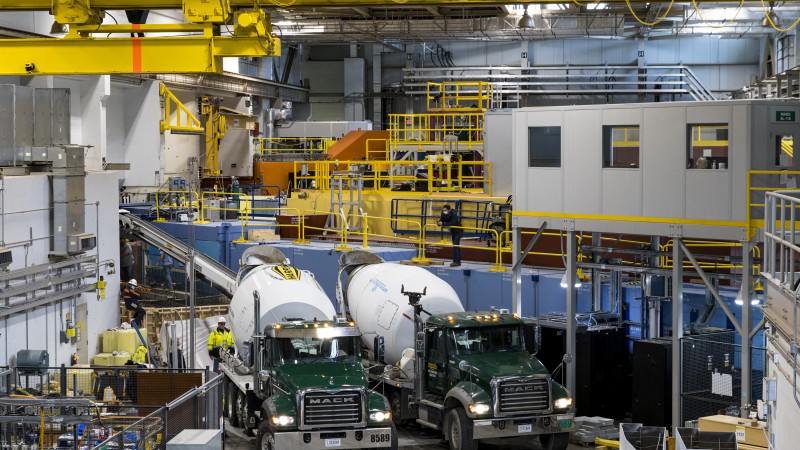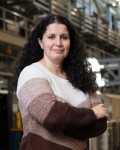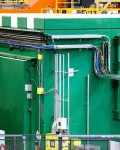Concrete trucks entering and exiting the Spallation Neutron Source (SNS) are a common sight as construction of the VENUS neutron imaging beamline progresses. Slated for completion and commissioning in 2024-2025, VENUS is the twentieth neutron instrument at SNS and will offer many new capabilities.
The Department of Energy’s (DOE’s) Oak Ridge National Laboratory (ORNL) hosts two world-leading neutron scattering research facilities, SNS and the High Flux Isotope Reactor (HFIR). VENUS will harness neutron imaging’s unique capabilities to study materials that will help improve energy efficiency, industrial productivity, consumer safety, national security, and much more.
Neutron imaging, a proven and valuable materials research technique, will be enhanced by VENUS’ high-resolution and energy-selective capabilities. This means researchers can choose which neutrons to use from the beam based on their speed (energy). Beamline choppers, mechanical rotors spinning at up to 3,600 RPM, will be used to select the speed of neutrons hitting the samples being studied.
In February 2021, a 40-cubic-yard concrete pour (about 150,000 pounds) formed VENUS’ 58-foot shelf to elevate and support the choppers and other optical equipment. It required four concrete trucks, two at a time—the first to enter the hall since the CORELLI elastic diffuse scattering spectrometer instrument was completed in 2014.

The VENUS beamline will offer neutron imaging capabilities to provide insights into materials used in energy storage, additive manufacturing, nuclear fuels, biological systems, geosciences, and other applications.
The next concrete pour will form an approximate 10-foot-tall “gap wall,” which will provide added shielding to protect users.
“It’s great to see VENUS taking shape after existing only in plans for the past 10 years,” said Aaron Hanks, lead project engineer for VENUS. “The VENUS team has just about completed the shielding modifications on the neighboring POWGEN powder diffractometer instrument required to accommodate VENUS.”
Neutron imaging is a non-invasive, non-destructive materials analysis technique that is complementary to other methods such as x-ray and gamma particle imaging. Considered an essential tool for studying advanced materials and engineering applications, VENUS will ensure the United States remains competitive with other nations’ neutron sources for this type of research. Some are already building or operating advanced imaging instruments.
“This instrument will ensure that researchers from the US and from across the world continue to have ready access to the latest and best materials research facilities,” said Hans Christen, director of the Neutron Scattering Division. “VENUS will help our nation’s industries and universities in developing new and better materials, advancing our scientific understanding, and contributing to solving pressing challenges related to energy, the environment, efficient manufacturing, national security, and much more.”
Most neutron scattering techniques build atomic-level models of materials based on how neutrons scatter off atoms in small areas of a material. Neutron imaging generates complete 3D images of bulk materials as neutrons pass through them. The images are called radiographs, similar to medical x-rays, and they reveal the internal structures of objects based on contrast between the structures.
“VENUS will offer unique methods of studying large‐scale, complex systems in real time,” said Hassina Bilheux, VENUS lead imaging scientist. “Materials applications for VENUS include mapping phases in energy materials, internal strain, measuring isotopic content in nuclear materials, and many other uses.”
“VENUS will be the next instrument added to the SNS suite, leveraging the neutrons generated using the intense proton pulses from the SNS linear accelerator, which will soon deliver 2.0 megawatts of power,” said Mark Lyttle, section head for Neutron Technologies Engineering. “This will offer new opportunities for users to conduct a wide range of unique experiments and further cement SNS as a leader in neutron science.”
The SNS and HFIR are DOE Office of Science user facilities. UT-Battelle LLC manages ORNL for the DOE Office of Science. The Office of Science is the single largest supporter of basic research in the physical sciences in the United States and is working to address some of the most pressing challenges of our time. For more information, please visit www.energy.gov/science. –by Paul Boisvert



















